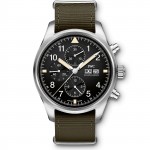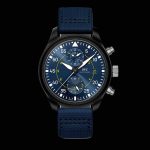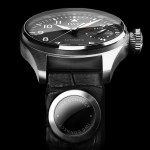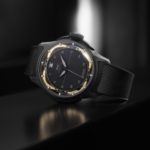IWC Revives the Big Pilot’s Watch Markus Bühler with a Tourbillon
The "turbine" pilot's watch with upgrades.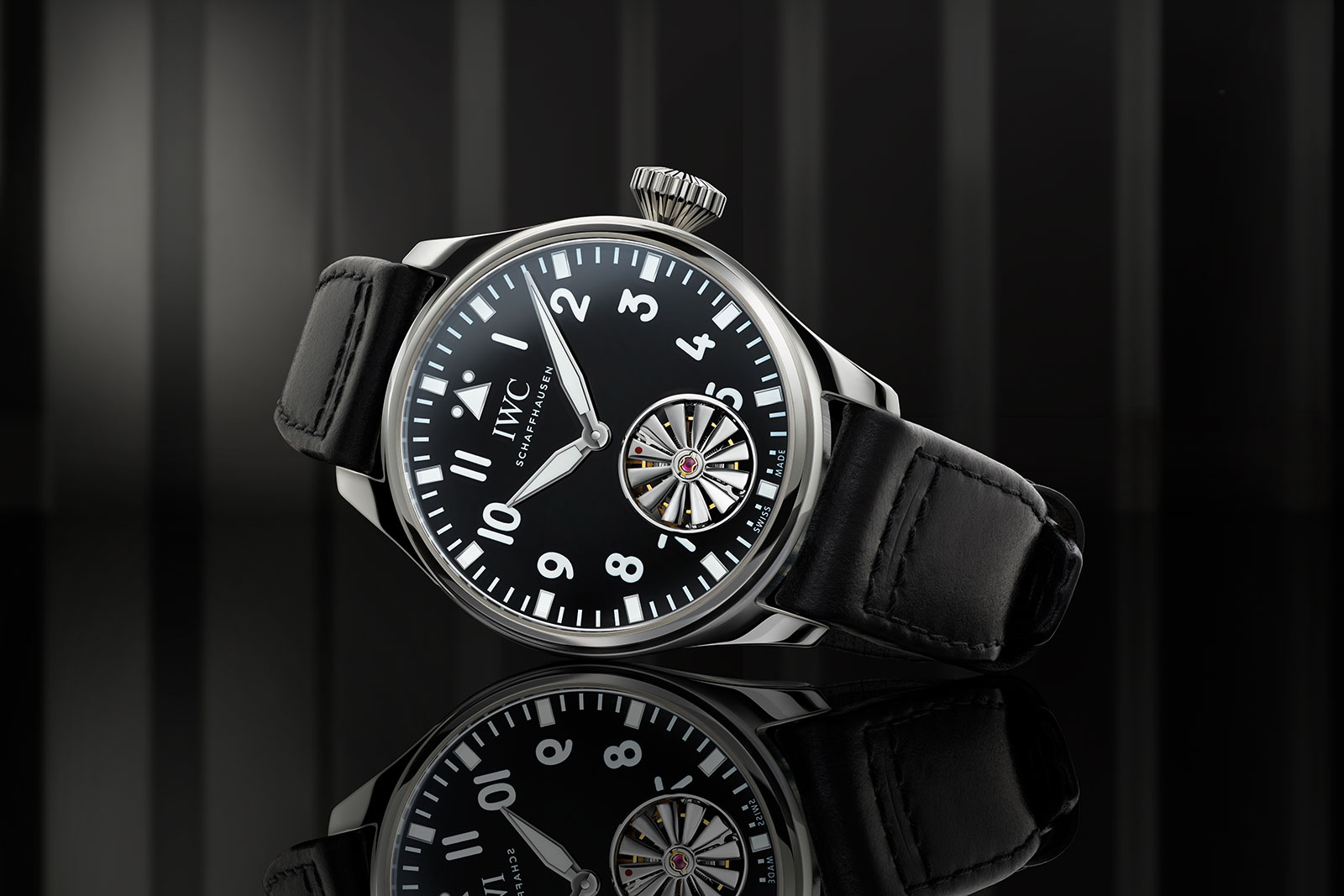
One of the least known but perhaps most interesting iterations of IWC’s trademark oversized pilot’s watch is making a comeback, but with an upgraded movement and precious metal case. The Big Pilot’s Watch 43 Tourbillon Markus Bühler retains the key elements of its namesake 2008 original, but with a self-winding tourbillon movement inside a platinum case. The tourbillon is flying, while its cage takes the form of a turbine blade.
A simple concept that played to the Big Pilot’s historical roots, the original model was conceived by a young Markus Bühler as part of a contest for IWC apprentices, but appealing enough that IWC made a dozen as a limited edition. Mr Bühler naturally won the contest and now oversees the entire assembly process at Manufakturzentrum, the IWC facility where both production of parts and assembly of in-house movements is done. Powered by the in-house cal. 82905, the Tourbillon Markus Bühler will naturally be put together at the Manufakturzentrum.
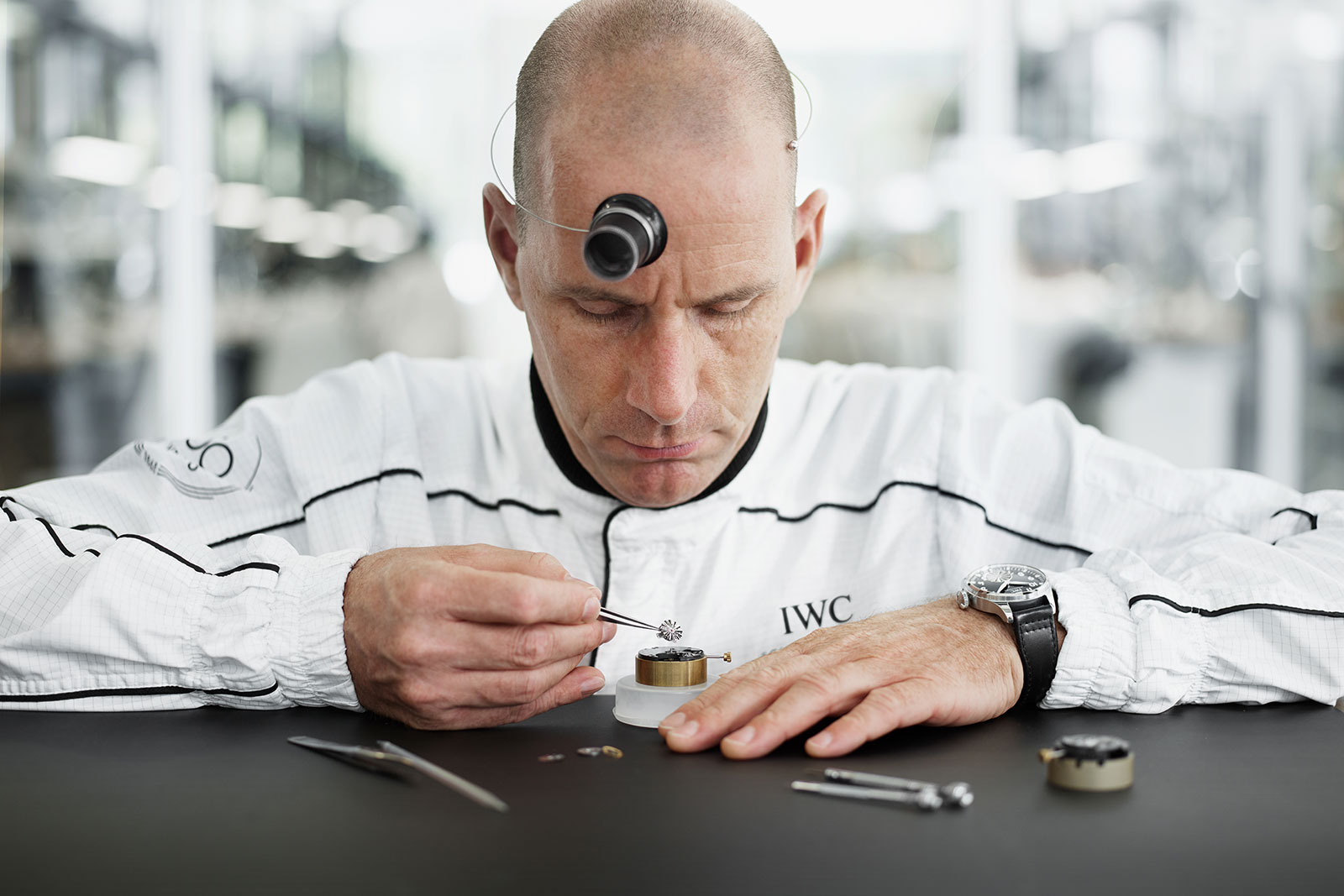
Markus Bühler, now the Associate Director of Watch & Movement Assembly at Manufakturzentrum
Initial thoughts
The original Markus Bühler was interesting and appealing because it captured the spirit of a pilot’s watch in a novel manner while still retaining the functional aesthetics expected of such a watch. The turbine seconds was a simple modification that worked perfectly, both visually and conceptually.
Now the idea has been brought back, but in a fancier package. The new Markus Bühler still makes sense – the turbine tourbillon is appealing and also functional as a regulator – but it is unsurprisingly expensive. At the same time, the upgrades to the watch mean some of the no-frills functionality of the original has been lost, which is not unexpected since the IWC pilot’s watch is a functional luxury watch rather than an actual instrument.
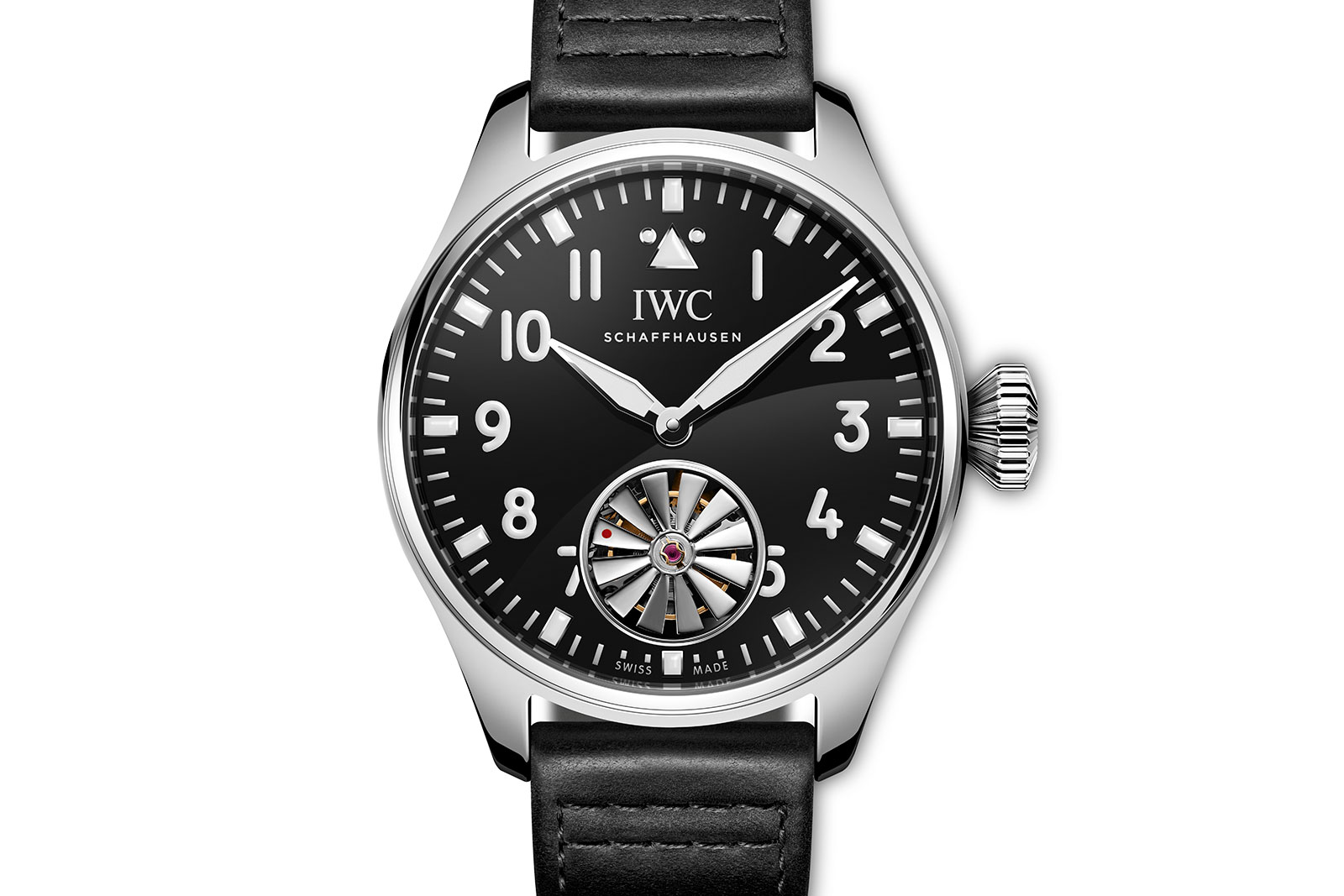
Also worth noting is the reduced case size. At 43 mm the Markus Bühler Tourbillon will definitely be more wearable than the 46 mm original, despite the hefty platinum case, but it might lack the presence of the original, which was really a big pilot’s watch that was probably too big but sensible in its own way.
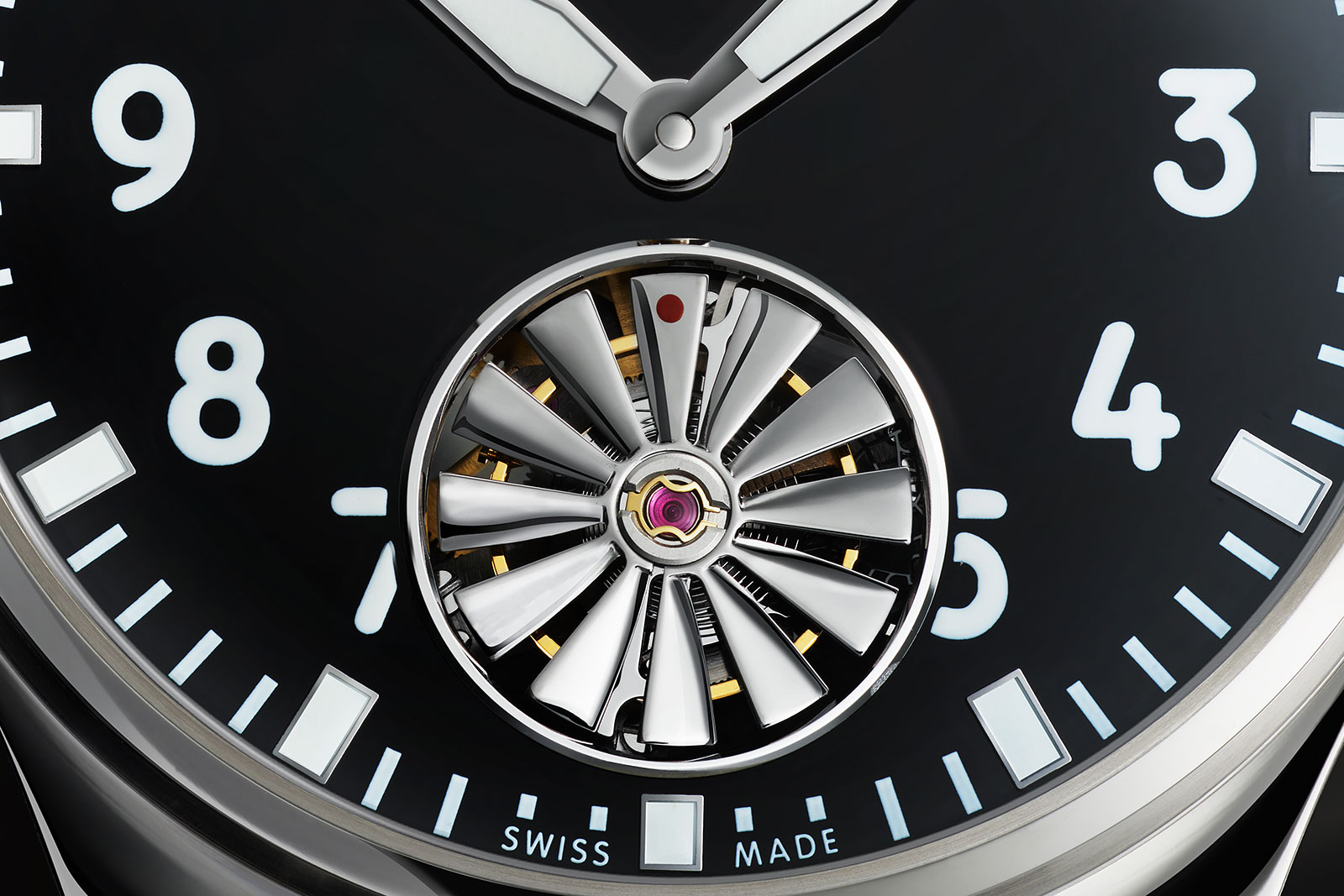
Still, some of the changes, like the addition of a tourbillon and platinum case, feel like reasons to enable a six-figure price. The Markus Bühler Tourbillon costs CHF125,000, or about US$136,000, making it very pricey relative to the original, but about market for such a tourbillon with a platinum case. Preserving more of the original’s concept would have been a good thing, particularly the no-frills steel case, since it would have also made the watch more affordable.
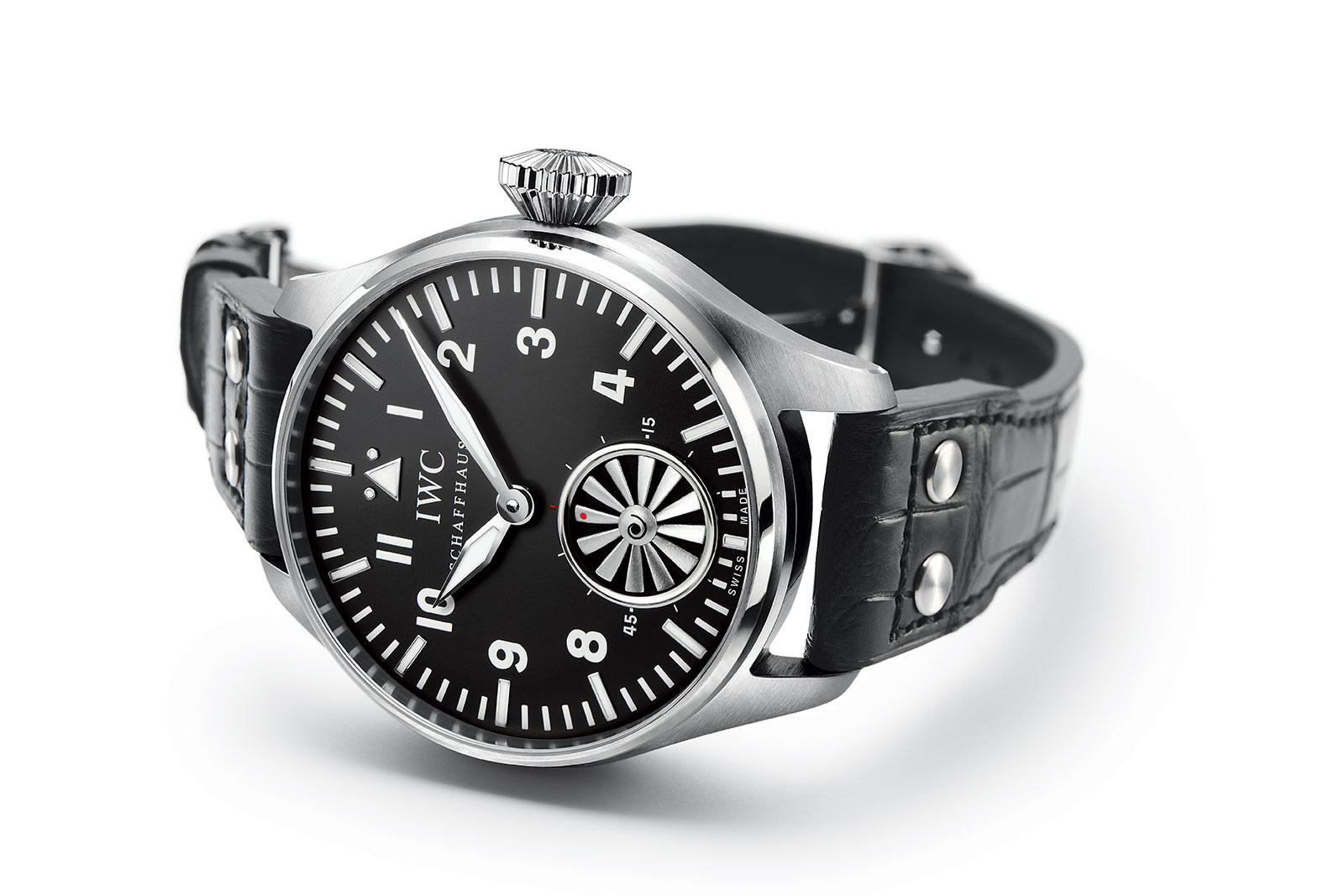
The original Markus Bühler in steel
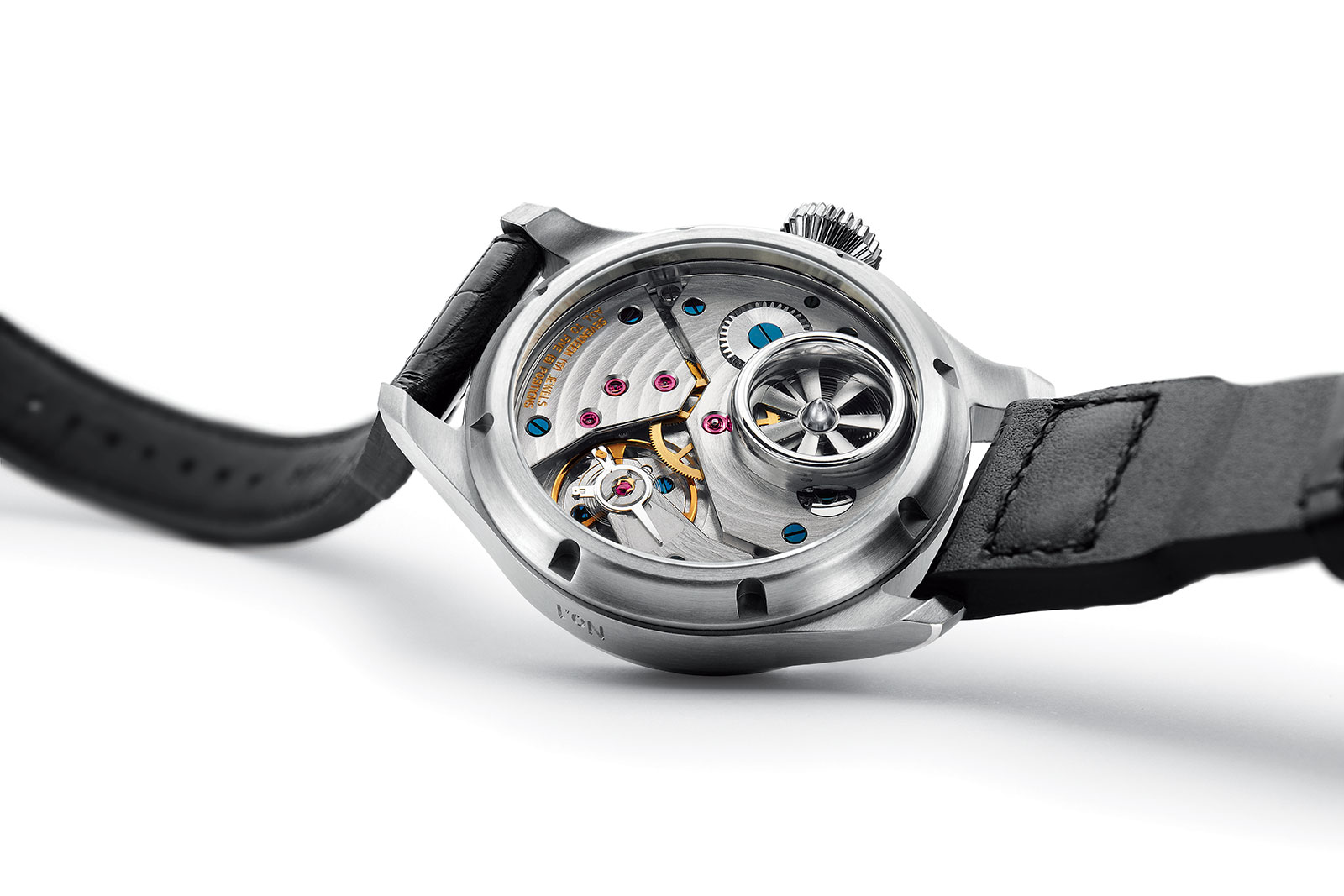
The back of the original showing the Unitas movement
A spinning turbine
Unsurprising for an apprentice’s project, the original Big Pilot Markus Bühler was a no-frills watch. It was powered by a modified Unitas movement, the low-cost calibre found in many oversized watches, including Panerai’s entry-level models. The new Tourbillon Markus Bühler, on the other hand, is very much a luxury complicated watch with a platinum case and in-house movement.
Substantially smaller than the original, the Tourbillon Markus Bühler has a 43 mm case in platinum that’s 14.6 mm high. It has almost the same dimensions as the regular-production Big Pilot’s Watch 43, but stands 0.2 mm taller due to the tourbillon. Despite the reduction in size, the Tourbillon Markus Bühler will be a weighty watch due to the case material.
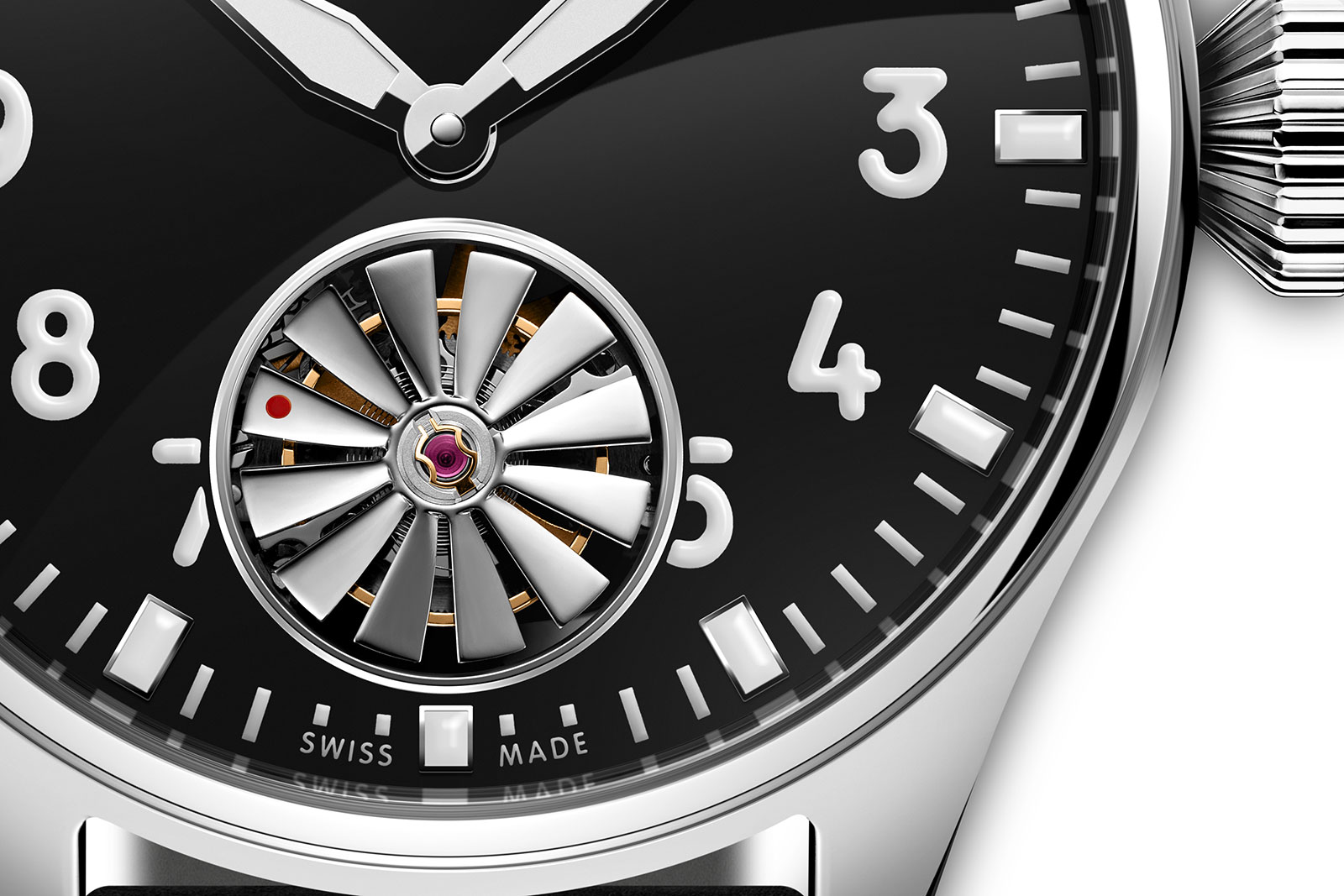
The dial has similarly been made more elaborate. Instead of the matte finish on the original, the dial is now a glossy black lacquer. And though the design remains similar, the dial now sports the typography with a rounded font that is standard across the Pilot’s Watch line.
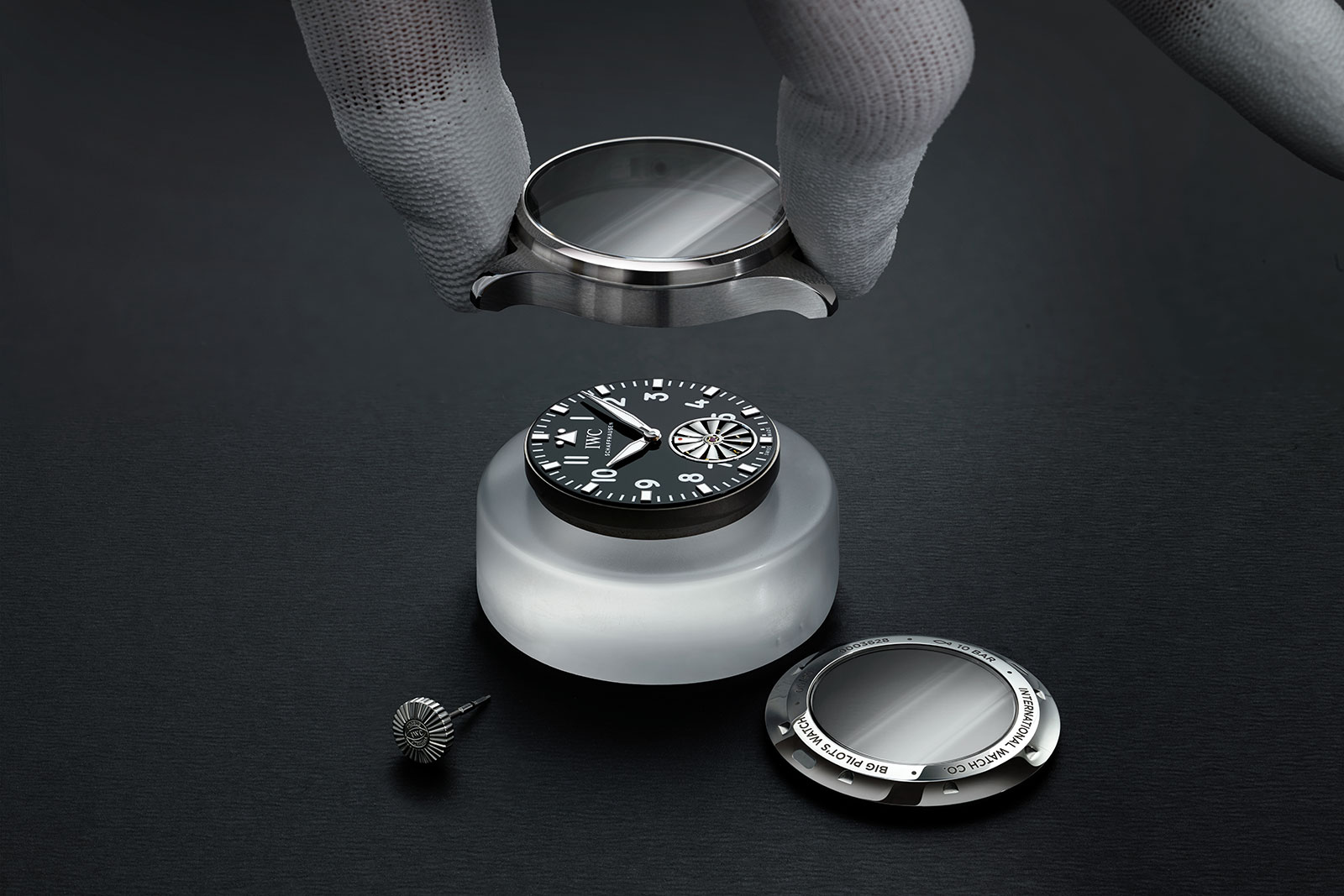
The all-important turbine remains at six o’clock. As on the original, it makes one revolution a minute. But it is no seconds hand, rather the turbine blades are the upper cage of the flying tourbillon found in the cal. 82905.
The cal. 82905 is a new movement, but based on the workhorse cal. 82000 family that is found inside a range of IWC models from the time-only Portugieser Automatic 40 to the Portofino Perpetual Calendar. In other words, the cal. 82905 is essentially a cal. 82000 with a flying tourbillon.
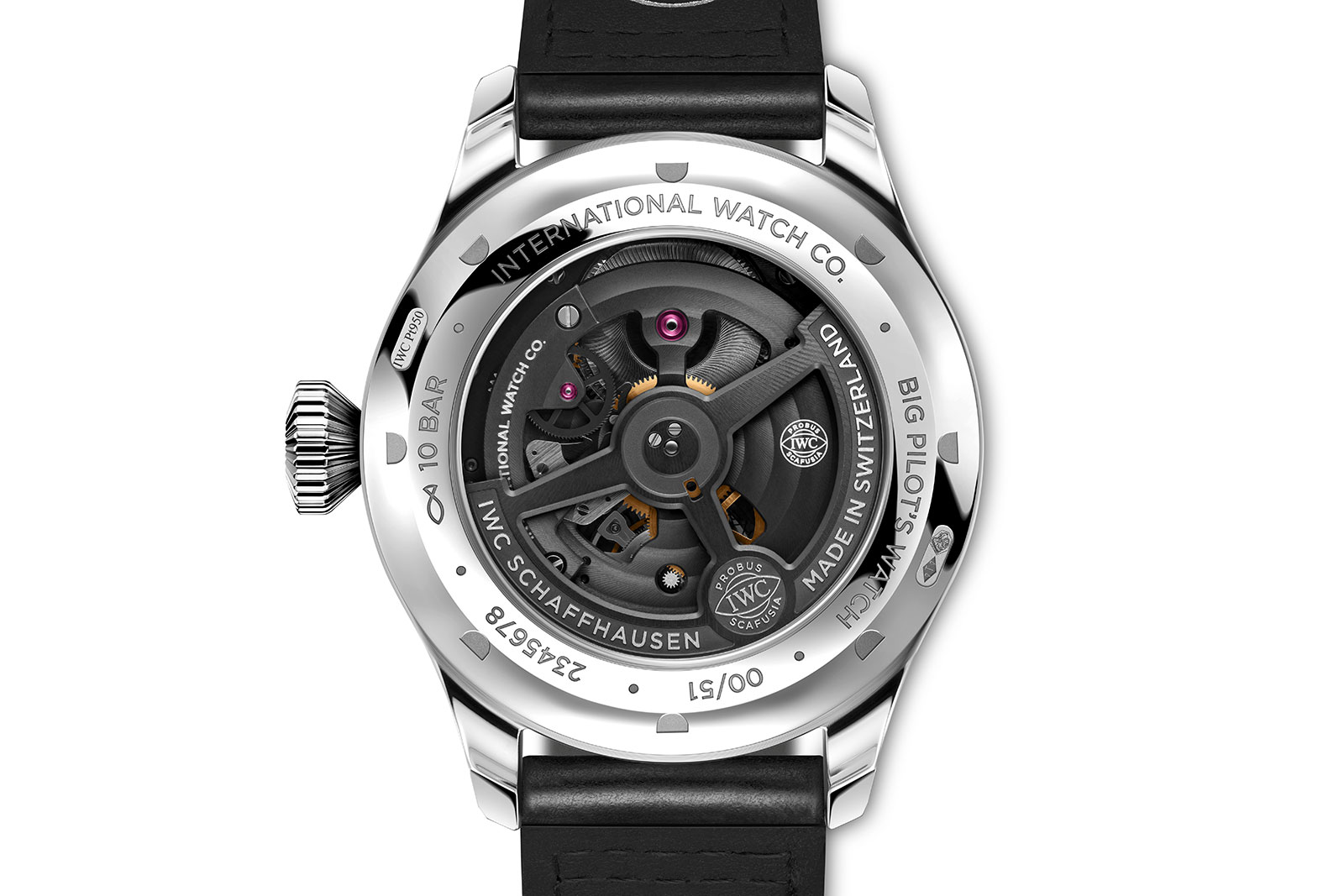
Mechanically, the addition of a tourbillon is fairly straightforward, since the balance wheel is located at the six o’clock position in the base movement. Moreover, IWC already has a compact flying tourbillon construction in its stable, one that dates back to the early 1990s.
The specific execution of the flying tourbillon, however, is interesting. The upper cage of the tourbillon are the turbine blades, which also serve as a regulator index because the hairspring is attached to the underside of one blade, allowing a watchmaker to adjust the hairspring by rotating the turbine.
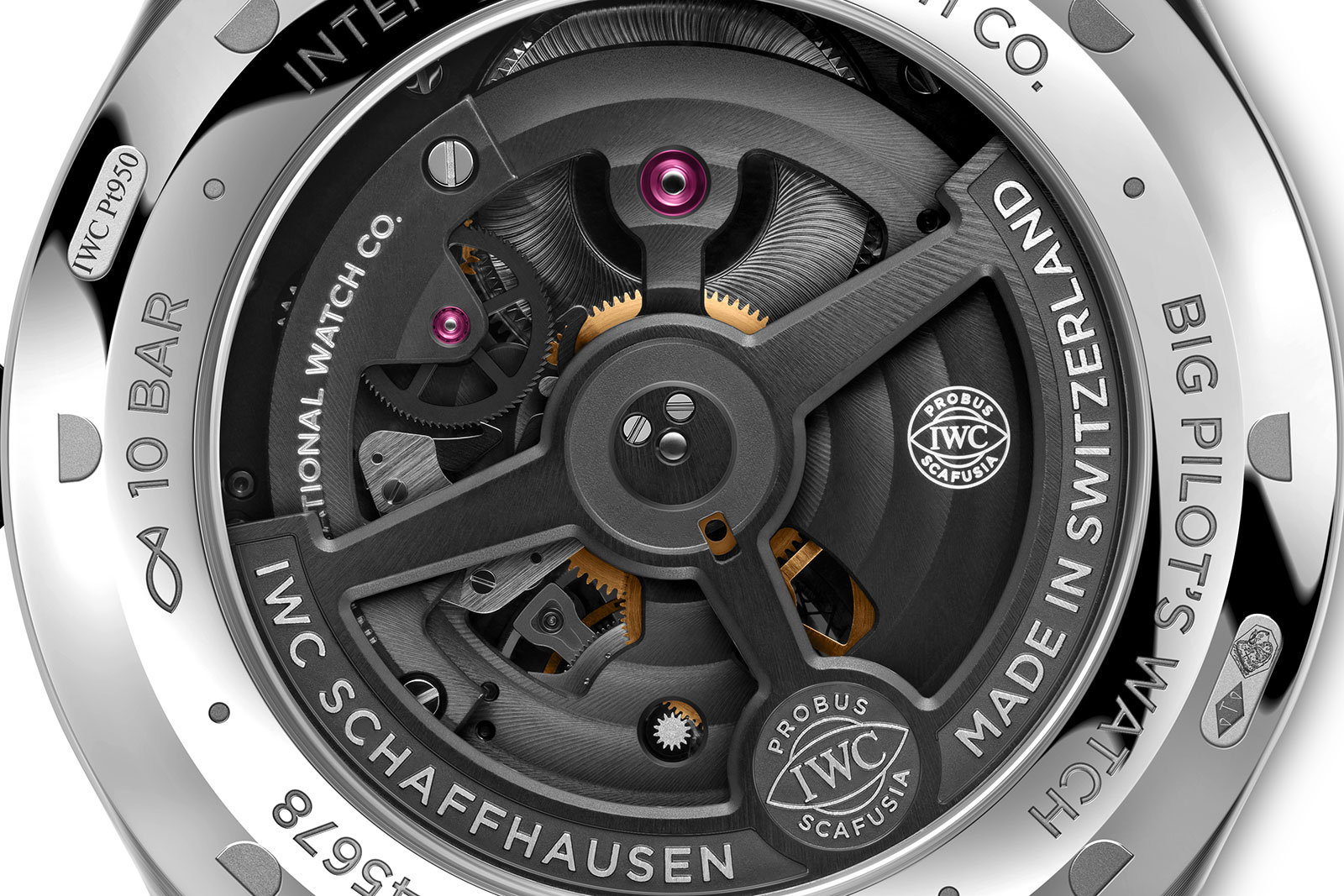
The other notable feature of the movement are the escapement parts, which are silicon coated with synthetic diamond, or Diamond Shell technology in IWC terminology. As a result, the pallet fork and escape wheel operate with superior efficiency due to lower friction and less weight. While diamond-coated silicon parts are not new – Ulysse Nardin first employed this technology over a decade ago – they are novel for IWC and its sister companies in Richemont.
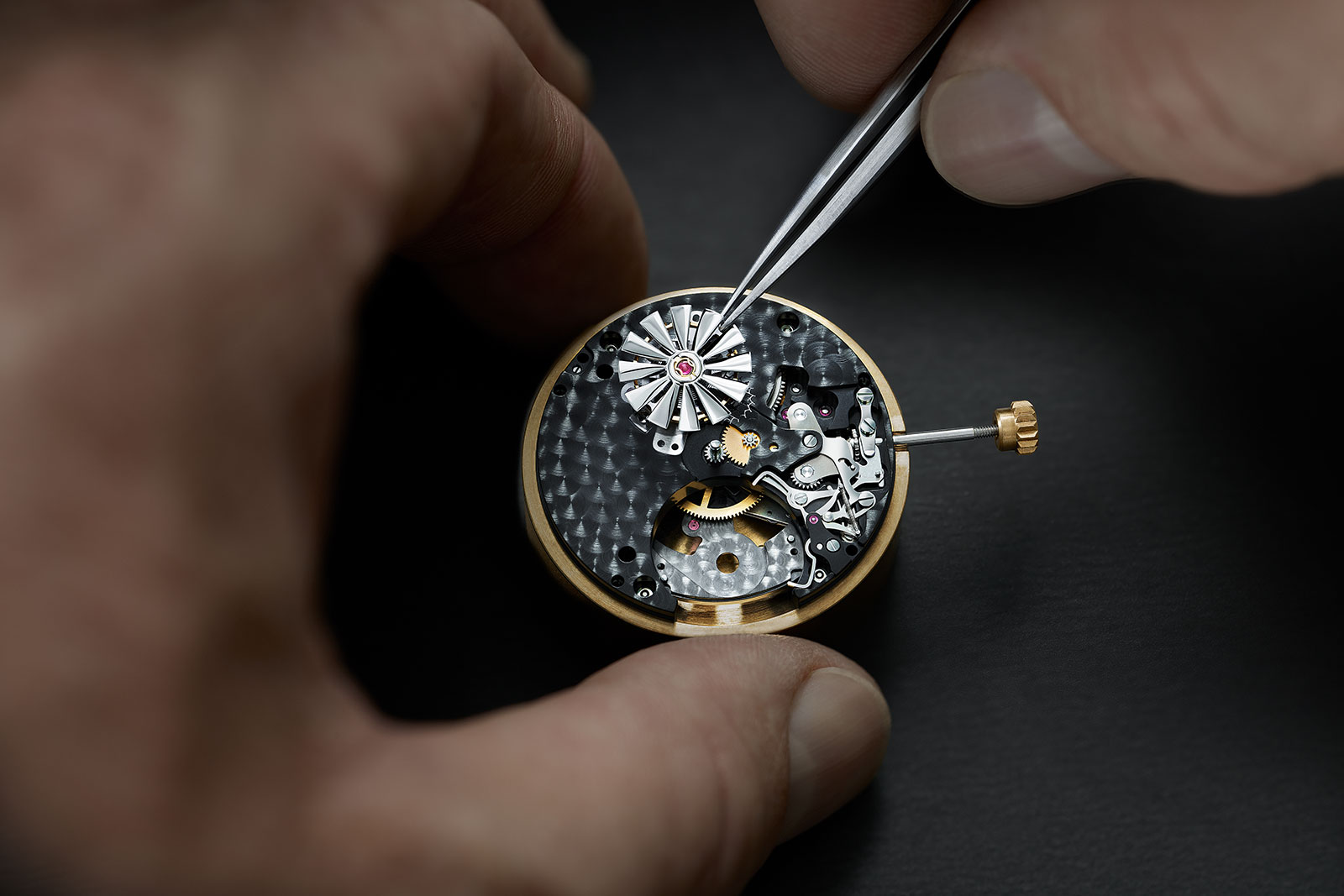
Key Facts
IWC Big Pilot’s Watch 43 Tourbillon Markus Bühler
Ref. IW329901
Diameter: 43 mm
Height: 14.6 mm
Material: Platinum
Crystal: Sapphire
Water resistance: 100 m
Movement: Cal. 82905
Functions: Hours, minutes, and flying tourbillon
Frequency: 28,800 beats per hour (4 Hz)
Winding: Automatic
Power reserve: 80 hours
Strap: Black Cordovan leather with platinum buckle
Limited edition: 51 pieces
Availability: Only at IWC boutiques
Price: CHF125,000 excluding taxes
For more, visit IWC.com.
Back to top.

